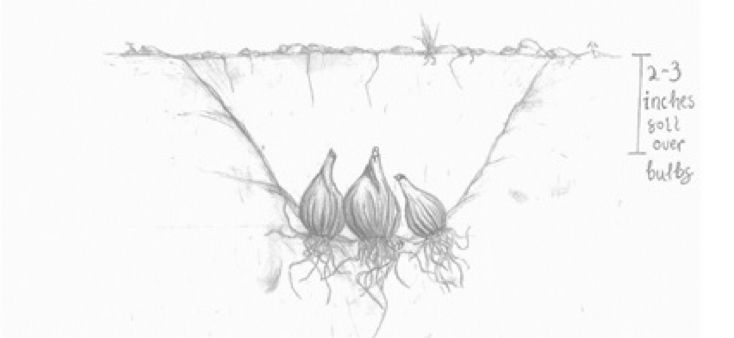

Heirloom jonquils (Narcissus jonquilla) are beloved for their intoxicating sweet fragrance and cheerful, golden-yellow blooms.
These delightful flowers, with their delicate clusters of blossoms on each stem, bring a touch of sunshine and nostalgia to any garden.
1. Intoxicating Fragrance: The sweet, honey-like scent of jonquils is a delight to the senses, often compared to the aroma of bubblegum.
2. Abundant Golden Blooms: Multiple golden-yellow flowers adorn each stem, creating a vibrant and cheerful display in late winter and early spring.
3. Perennial and Naturalizing: Jonquils are perennials that readily multiply and spread, filling large areas with their beautiful blooms.
4. Pollinator Magnets: Bees and butterflies love jonquils, attracted by their golden color and sweet scent, especially when other food sources are scarce.
5. Versatile Beauty: Jonquils look stunning in gardens, as cut flowers, or in containers, adding charm to any space.
| What is a Jonquil? A jonquil is a small, round flower bulb belonging to the Narcissus genus, scientifically known as Narcissus jonquilla. When to Plant Jonquil Bulbs: Plant jonquil bulbs in the fall for a vibrant spring display. How to Plant Jonquil Bulbs: Plant them 2-3 times their height deep, with the pointed end facing upwards. How Do Jonquils Spread? Jonquils spread through seed production, bulb division, and mechanical means like plowing or animal disturbance. Jonquil Colors: Jonquil flowers are a deep, uniform golden yellow. Jonquil vs. Daffodil: While both are Narcissus, jonquils typically have smaller flowers, multiple blooms per stem, and a more intense fragrance. Jonquil Origins: Jonquils are native to western Europe, primarily Spain and Portugal. |
 |
Jonquils have a rich history and have made their way into popular culture through:
Perfume Industry: Their sweet fragrance is used in many perfumes.
Namesake: Jonquil Siegel, a reality TV star, bears the name of this charming flower.
Fashion: The "In Bloom by Jonquil" clothing line celebrates the flower's beauty.
Jonquils bring joy to gardens and gardeners alike. With their captivating fragrance, vibrant blooms, and easy-care nature, they are a delightful addition to any landscape.
Plant them this fall and revel in their golden beauty for years to come.
Heirloom jonquils (Narcissus jonquilla) are beloved for their intoxicating sweet fragrance and cheerful, golden-yellow blooms.
These delightful flowers, with their delicate clusters of blossoms on each stem, bring a touch of sunshine and nostalgia to any garden.
1. Intoxicating Fragrance: The sweet, honey-like scent of jonquils is a delight to the senses, often compared to the aroma of bubblegum.
2. Abundant Golden Blooms: Multiple golden-yellow flowers adorn each stem, creating a vibrant and cheerful display in late winter and early spring.
3. Perennial and Naturalizing: Jonquils are perennials that readily multiply and spread, filling large areas with their beautiful blooms.
4. Pollinator Magnets: Bees and butterflies love jonquils, attracted by their golden color and sweet scent, especially when other food sources are scarce.
5. Versatile Beauty: Jonquils look stunning in gardens, as cut flowers, or in containers, adding charm to any space.
| What is a Jonquil? A jonquil is a small, round flower bulb belonging to the Narcissus genus, scientifically known as Narcissus jonquilla. When to Plant Jonquil Bulbs: Plant jonquil bulbs in the fall for a vibrant spring display. How to Plant Jonquil Bulbs: Plant them 2-3 times their height deep, with the pointed end facing upwards. How Do Jonquils Spread? Jonquils spread through seed production, bulb division, and mechanical means like plowing or animal disturbance. Jonquil Colors: Jonquil flowers are a deep, uniform golden yellow. Jonquil vs. Daffodil: While both are Narcissus, jonquils typically have smaller flowers, multiple blooms per stem, and a more intense fragrance. Jonquil Origins: Jonquils are native to western Europe, primarily Spain and Portugal. |
 |
Jonquils have a rich history and have made their way into popular culture through:
Perfume Industry: Their sweet fragrance is used in many perfumes.
Namesake: Jonquil Siegel, a reality TV star, bears the name of this charming flower.
Fashion: The "In Bloom by Jonquil" clothing line celebrates the flower's beauty.
Jonquils bring joy to gardens and gardeners alike. With their captivating fragrance, vibrant blooms, and easy-care nature, they are a delightful addition to any landscape.
Plant them this fall and revel in their golden beauty for years to come.